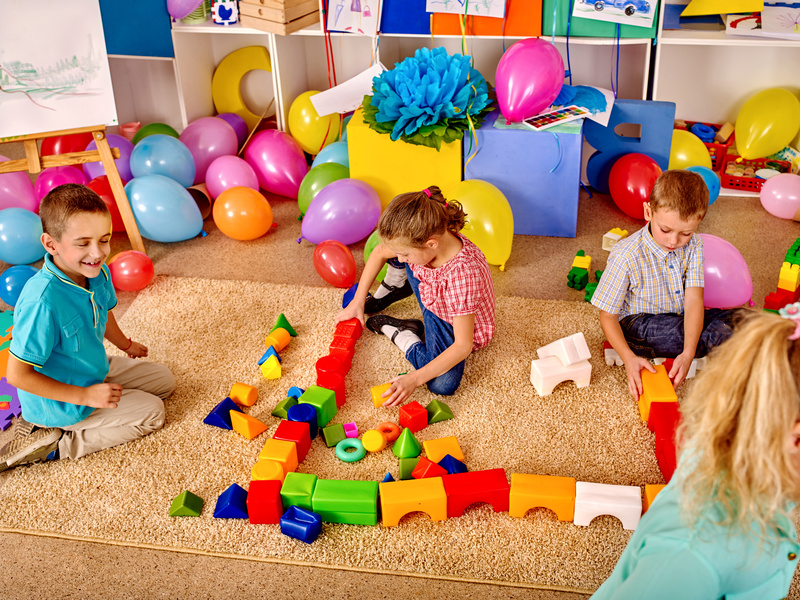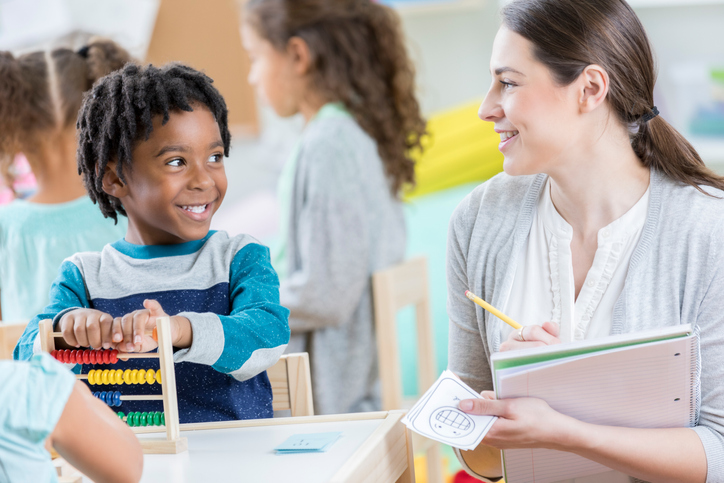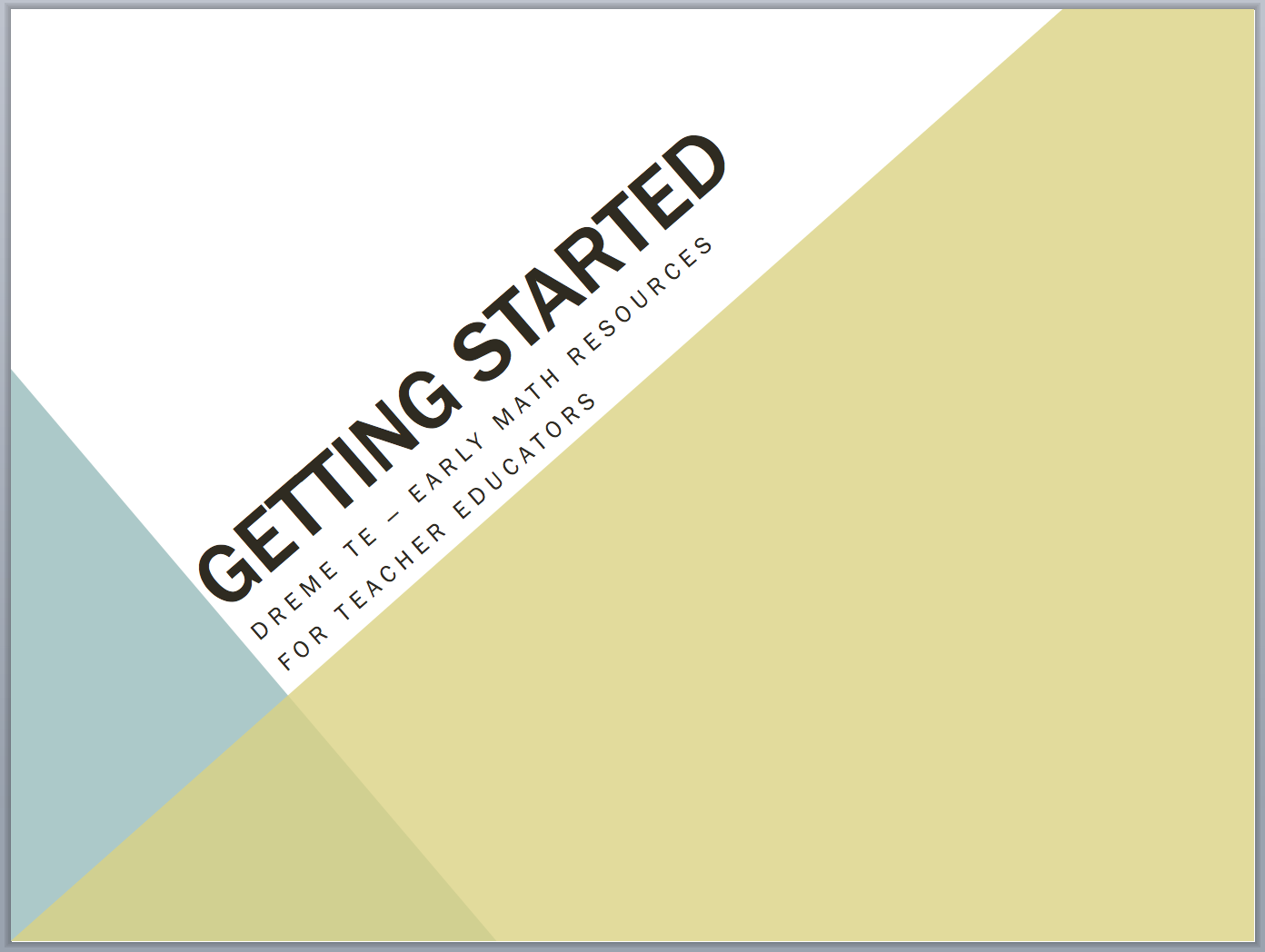A brief account of several different approaches to learning what children know about shape and space. The piece shows how participants can use observation, drawing, and various activities to learn about children’s knowledge and language of geometric figures, physical and mental transformations, and spatial relations.
Assessing Geometry and Spatial Relations: How Can We Learn What Children Know?
In Overview of Formative Assessments (in the Overview module), a variety of formative assessment techniques were described. The tools described, including checklists, samples of children’s work, observations, and interviews, are useful across topics in early mathematics. Below we describe ways of assessing children’s knowledge about geometry and spatial relations using those tools.
As a reminder, formative assessment provides us with information that informs our instruction, curriculum, lesson plans and the classroom environment, so that we can better support children’s learning. It also allows us to provide differentiated instruction, ensuring individualized and appropriate support for each child in the classroom. The first question teachers need to answer is, "What do we want to know about a child’s geometry and spatial relations development?" Research supports the idea that children actually can become quite capable in these areas. Children can learn the names of shapes ; even more than that, they can also gain a deep understanding of the attributes of these shapes. This applies to two-dimensional and three-dimensional shapes. Although there aren’t direct connections between the naming conventions of some two- and three-dimensional shapes, those that exist have an exquisite logic to them. This logic is exemplified in the naming of prisms and pyramids. Pyramids and prisms are named after their bases. If children know the names of the two-dimensional shapes that form these bases, they will know the name of the pyramids and prisms (and delight in that knowledge!).We also know that children’s use of spatial vocabulary is positively correlated with their acquisition of spatial skills, both in spatial relations and physical and mental transformations. Children use these skills in all areas of the classroom and in many activities, from block play to puzzle play to Mother May I. Adequately supporting all of these areas in development requires assessing children’s spatial vocabulary, knowledge of spatial relationships, understanding of geometric figures, and physical and mental transformation. Use these tips in conjunction with The Mathematics of Geometry and Spatial Relations and Objects and our Place Among Them. These will provide information on both assessment techniques and the domains of geometry and spatial relationships, enabling you to measure and support development in this area.
; even more than that, they can also gain a deep understanding of the attributes of these shapes. This applies to two-dimensional and three-dimensional shapes. Although there aren’t direct connections between the naming conventions of some two- and three-dimensional shapes, those that exist have an exquisite logic to them. This logic is exemplified in the naming of prisms and pyramids. Pyramids and prisms are named after their bases. If children know the names of the two-dimensional shapes that form these bases, they will know the name of the pyramids and prisms (and delight in that knowledge!).We also know that children’s use of spatial vocabulary is positively correlated with their acquisition of spatial skills, both in spatial relations and physical and mental transformations. Children use these skills in all areas of the classroom and in many activities, from block play to puzzle play to Mother May I. Adequately supporting all of these areas in development requires assessing children’s spatial vocabulary, knowledge of spatial relationships, understanding of geometric figures, and physical and mental transformation. Use these tips in conjunction with The Mathematics of Geometry and Spatial Relations and Objects and our Place Among Them. These will provide information on both assessment techniques and the domains of geometry and spatial relationships, enabling you to measure and support development in this area.
Formative Assessments
Spatial Relations Vocabulary
- Play I Spy with a group of children using spatial relations words and phrases such as next to, beneath, on top of, and so on.
- Ask children to take the role of the teacher in the game I Spy, using spatial relations words.
- Ask children to describe scenes in picture books or their drawings. Prompt with questions using spatial relations vocabulary if necessary (“Who is on top of the mountain? What is in front of the tree?”)
Spatial Relations
- Ask children to draw a scene from a picture book (use simple illustrations with objects at different distances and depths).
- Engage and observe children in simple map creation (for example, of the playground, classroom, or community).
- Observe children playing board games or doing activities that require them to move objects (or themselves) on a grid (e.g., two squares up and two squares to the left).
Geometric Figures: Names and Attributes
- Ask individual children to name shapes as they put together shape puzzles, create tangrams, or draw (this should be engaging and conversation-based, not quiz-like).
- Describe a hidden shape (“My shape has three straight sides and three angles, what is my shape?”) and ask children to name it.
- Ask children to describe a hidden shape to you and/or other children.
- Ask children to find specific shapes in their environments.
- Observe children as they sort shapes; ask them about the attributes of the shapes they’ve sorted.
- Provide students with a sheet of a variety of shapes (especially non-stereotypical shapes like long rectangles, squares with corners at the bottom, and narrow triangles) and ask them to put a counter on all of the rectangles (followed by squares, triangles, etc.).
Physical and Mental Transformations
- Observe individual children or groups of children completing puzzles, tangrams, or using a shape sorter. Does it look like they have a plan as they move the pieces? Do they try different orientations if it doesn’t fit the first time?
- Observe children playing with blocks, turning blocks to stack or fit them. Ask questions about their constructions: “How did you know that would fit?” “What kind/shape of block are you looking for now?”
- Observe children playing and building with manipulatives and materials: turning, flipping, stacking, sliding, inserting, attaching, and gluing. Are they creating symmetrical constructions? Are they placing triangles above squares so that the triangle base and the top of the square are next to each other? What can you say about the skills they are exhibiting? What questions can you ask to support their spatial relations development?
Check out our Formative Assessment resources across our other content modules:
- Counting (It Counts)
- Operations (It Adds Up)
- Patterns & Algebra (Spotting Patterns)
- Measurement & Data (Measurement & Data)



